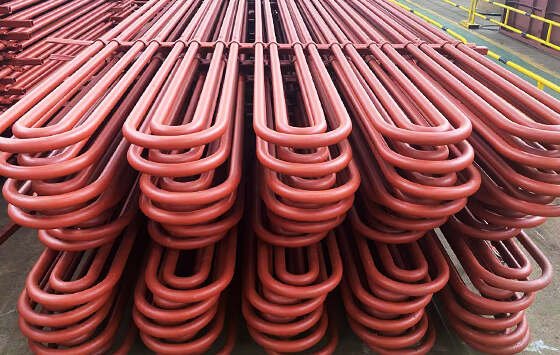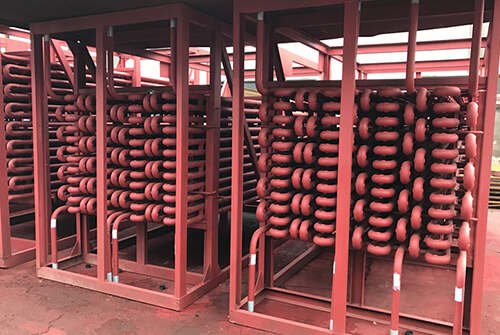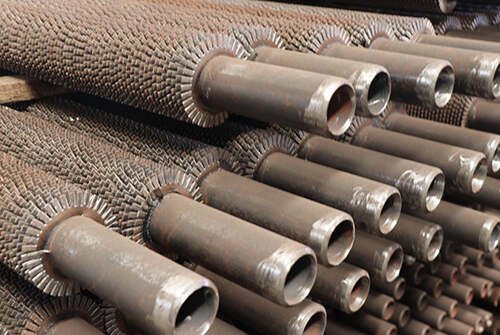An economizer is an essential component in a boiler system, designed to improve the overall energy efficiency of the boiler and reduce fuel consumption. It functions by preheating the feedwater before it enters the boiler. Here’s a breakdown of your questions:
What is an economizer in a boiler?
An economizer in a boiler is a specialized heat exchanger device that forms an integral part of a boiler system. Positioned within the flue gas path, typically downstream of the boiler and before the chimney or stack, an economizer serves a critical function in improving the energy efficiency of the entire boiler setup.
At its core, an economizer is designed to recover and utilize waste heat that is typically lost in the flue gases during the combustion process. These waste heat emissions, laden with thermal energy, would otherwise be expelled into the atmosphere. However, the economizer intercepts these hot flue gases and extracts their valuable heat content.
The primary objective of an economizer is to preheat the cold water or feedwater that is supplied to the boiler. In doing so, it achieves two important goals:
- Reduction of Fuel Consumption: By preheating the feedwater, the economizer significantly lowers the amount of energy required to bring the water to its boiling point. This means the boiler can operate more efficiently and with less fuel, resulting in considerable cost savings and environmental benefits. Essentially, it harnesses the heat from the flue gases to “pre-warm” the water, cutting down the energy needed for the subsequent heating process within the boiler itself.
- Lowering Flue Gas Temperature: Beyond the fuel-saving aspect, the economizer also contributes to the boiler system’s overall health and longevity. It cools the hot flue gases, which, in turn, reduces the risk of condensation within the stack or chimney and minimizes the potential for corrosion in the flue gas path. This corrosion prevention ensures the durability and extended lifespan of the boiler and related equipment, making it an essential component in industries where boilers are critical to operations.
In practical terms, the economizer consists of a network of tubes or coils that are exposed to the high-temperature flue gases. As the flue gases pass through these tubes, they transfer their heat to the cold feedwater circulating around them. This heat transfer process elevates the temperature of the feedwater, which exits the economizer at a significantly higher temperature than it would have if it had gone directly to the boiler. This preheated feedwater is then delivered to the boiler, where it requires less energy input to reach the desired steam generation temperature.
In essence, the economizer is a crucial component that contributes to energy conservation, cost reduction, and the efficient operation of boiler systems, making it an indispensable element in various industries where boilers are central to their processes.

What is the function of an economizer?
The economizer, a vital component in a boiler system, serves a multifaceted role aimed at optimizing the overall energy efficiency of the boiler and minimizing operational costs. Its core function is to recover waste heat from the hot flue gases produced during the combustion process and utilize that recovered heat to preheat the cold water, or feedwater, before it enters the boiler. This process yields several key benefits:
Reduction of Fuel Consumption:The primary and most significant function of an economizer is to reduce fuel consumption. By preheating the feedwater, the economizer diminishes the energy required to raise the water temperature to its boiling point within the boiler. In essence, it acts as a heat exchanger, harnessing the heat from the waste flue gases to “pre-warm” the water. This results in a substantial decrease in the amount of fuel necessary to produce steam. The energy savings associated with this process are not only environmentally friendly but also cost-effective, making it an attractive addition to any boiler system.
Lowering Flue Gas Temperature:Beyond its impact on fuel savings, the economizer contributes to the longevity and health of the entire boiler system. As it preheats the feedwater, the economizer cools down the hot flue gases. This cooling process is essential in reducing the risk of condensation within the stack or chimney. Condensation in the flue gas path can lead to corrosion, which, over time, can damage the boiler and related equipment. By preventing condensation, the economizer ensures that the boiler system operates at peak performance for an extended period. This aspect is especially important in industries where boiler downtime and maintenance are costly and disruptive.
Enhancing Overall Efficiency:The economizer, by enabling the boiler to operate with preheated feedwater, improves the overall efficiency of the boiler system. This is essential because efficiency is a key metric for evaluating the performance of a boiler. Inefficient boilers consume more fuel, produce higher emissions, and incur greater operational costs. The economizer’s function of heat recovery and feedwater preheating addresses these concerns, making the entire boiler system more efficient and sustainable.
In practical terms, the economizer comprises an arrangement of tubes or coils that are strategically positioned within the flue gas path. As the hot flue gases pass through these tubes, they release their heat to the feedwater that circulates around them. This heat transfer process elevates the temperature of the feedwater, ensuring that it enters the boiler at a considerably higher temperature than if it were to bypass the economizer. This preheated feedwater subsequently requires less energy input to reach the desired steam generation temperature, culminating in significant energy savings.

How does an economizer work?
An economizer is a vital component within a boiler system designed to enhance energy efficiency by recovering waste heat from the hot flue gases produced during the combustion process. Its operation involves a series of systematic steps:
Positioning in the Flue Gas Path:Economizers are strategically placed within the flue gas path, usually downstream of the boiler but before the chimney or stack. This positioning allows them to intercept the high-temperature flue gases as they exit the boiler.
Heat Exchange Principle:The economizer operates on the principle of heat exchange. It consists of a network of tubes or coils made of thermally conductive materials, typically steel or copper. These tubes are exposed to the hot flue gases passing through the economizer.
Heat Transfer Process:As the hot flue gases flow through the tubes or coils, they transfer their heat to the material of the economizer. This heat exchange process causes the flue gases to gradually lose temperature, while the economizer material becomes hotter.
Circulating Feedwater:Simultaneously, cold water, known as feedwater, is circulated through the economizer tubes or coils. This feedwater comes from the external water source and is directed to the economizer.
Preheating the Feedwater:The feedwater circulating through the economizer tubes absorbs the heat released by the flue gases. This transfer of thermal energy elevates the temperature of the feedwater, preheating it substantially.
Outlet of Preheated Feedwater:Once the feedwater has passed through the economizer and absorbed the available heat, it exits the economizer at a considerably higher temperature than its initial cold state.
Feedwater Delivery to Boiler:The preheated feedwater is then directed into the boiler, where it is further heated to its boiling point, generating steam. Since the feedwater is already partially heated by the economizer, it requires less energy input from the boiler to reach the desired temperature for steam generation.
Enhanced Boiler Efficiency:The preheated feedwater significantly reduces the energy needed within the boiler to produce steam. This results in an increase in the overall efficiency of the boiler system. By minimizing the energy required to heat the water to its boiling point, the boiler operates more efficiently and consumes less fuel. This, in turn, leads to cost savings and reduced environmental impact.
In summary, an economizer works by recovering heat from the waste flue gases produced during the combustion process. It utilizes heat exchange principles to preheat the cold feedwater, making it an essential component in boiler systems. This preheating process reduces the fuel consumption required for steam generation, prolongs the lifespan of the boiler system by preventing corrosion, and ultimately enhances the overall efficiency of the boiler, resulting in energy savings and environmental benefits.

How does an economizer save energy?
Economizers save energy in a boiler system by reducing the amount of fuel required to heat the water to its boiling point. This energy-saving is achieved through heat recovery from the waste flue gases. By preheating the feedwater, the boiler operates more efficiently, resulting in several benefits, including:
- Lower fuel consumption: Reduced fuel requirements lead to cost savings and a smaller carbon footprint.
- Extended equipment lifespan: Lowering flue gas temperatures reduces the risk of corrosion and wear on the boiler and stack, thus extending their operational life.
- Improved overall efficiency: The boiler operates with increased efficiency, which is crucial for industries where boilers are a significant energy consumer.
In summary, an economizer plays a crucial role in conserving energy in boiler systems by capturing and utilizing waste heat from the flue gases, ultimately improving efficiency and reducing operational costs.
DHB Boiler
Discover The Superior Quality And Cutting-Edge Technology Of DHB Boilers. Explore Our Range Of Biomass Boilers, Waste Heat Boilers, And More. Take Your Industrial Operations To New Heights With DHB Boiler.








